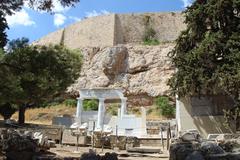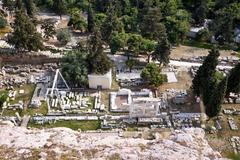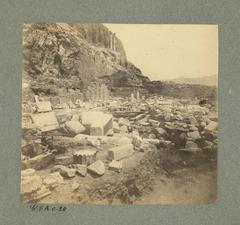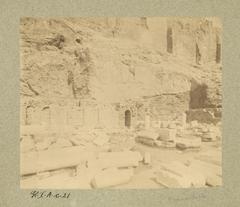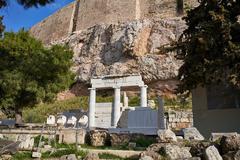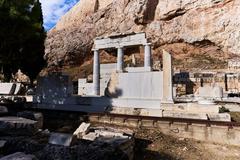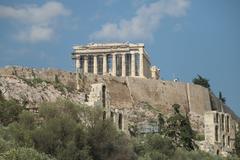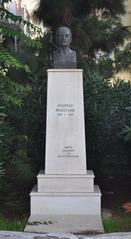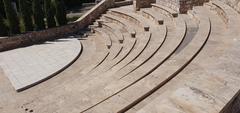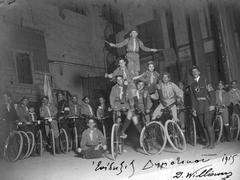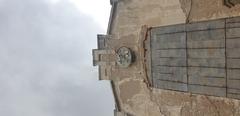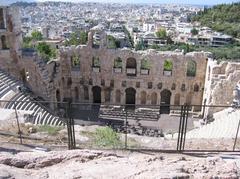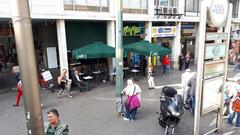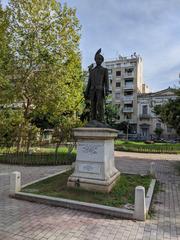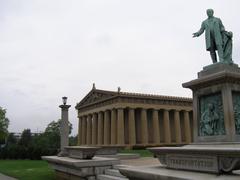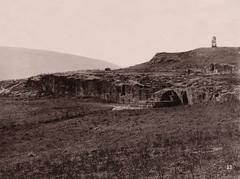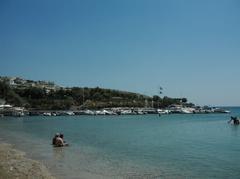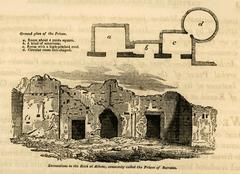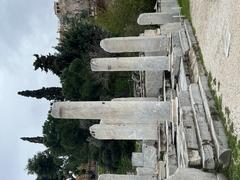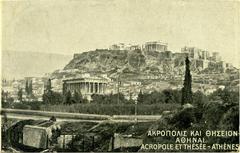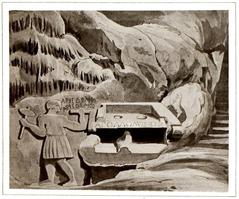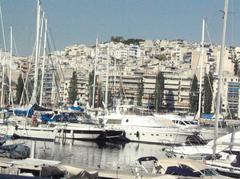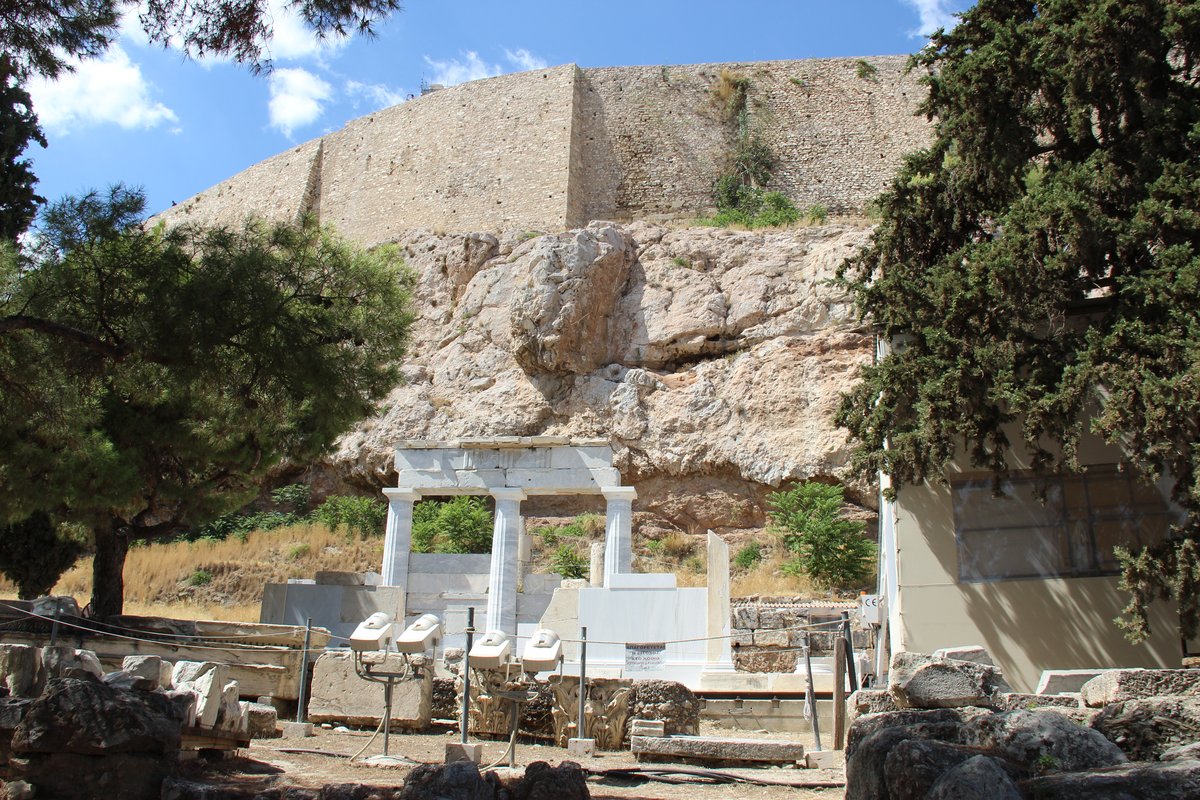
Visiting Hours and Tickets for Asclepieion of Athens, Piraeus Historical Sites
Date: 01/08/2024
Introduction
Visiting the Ασκληπιείο Αθηνών (Asclepieion of Athens) in Piraeus, Greece, offers a unique window into the ancient world of medicine and healing. This historical site, dedicated to Asclepius, the god of medicine, has roots dating back to the 5th century BCE. Located in Piraeus, the Asclepieion served as a sanctuary where the sick sought healing through rituals and medicinal herbs (World History). Its proximity to Athens, the epicenter of ancient Greek civilization, significantly contributed to its prominence and importance. The Asclepieion not only highlights ancient medical practices but also showcases the architectural prowess of the time, with features such as the abaton for divine visions and the tholos for rituals (Britannica).
The Asclepieion of Athens is part of a broader network of healing temples scattered across the ancient Greek world, all of which played a critical role in the development of early medical practices. This guide provides comprehensive information on the historical background, visiting hours, ticket prices, nearby attractions, and practical travel tips, ensuring visitors can fully appreciate and enjoy their journey through this ancient site. Whether you are a history enthusiast, a culture lover, or someone looking to explore the roots of modern medicine, the Asclepieion of Athens in Piraeus promises an enriching experience (Wikipedia).
Table of Contents
- Historical Background
- Visiting Information
- FAQ Section
- Preservation and Conservation
- Practical Information
- Cultural Practices and Festivals
- Modern-Day Relevance
Historical Background of the Asclepieion of Athens, Piraeus, Greece
Ancient Origins
The Asclepieion of Athens, a significant historical site located in Piraeus, Greece, was a healing temple dedicated to Asclepius, the god of medicine in ancient Greek religion. Dating back to the 5th century BCE, this site is a testament to the classical period of ancient Greece, marked by the construction of many significant structures, including the Long Walls that fortified the route from Athens to its port, Piraeus (Wikipedia).
Development and Significance
Part of a network of healing temples across the ancient Greek world, the Asclepieion of Athens served as a center of medical advice, prognosis, and healing. Its proximity to Athens, the heart of ancient Greek civilization, made it particularly important. The temple was a sanctuary where the sick would come to be healed through rituals and the use of medicinal herbs (World History).
Architectural Features
The Asclepieion’s layout typically included a series of buildings and spaces designed for various healing practices, such as the abaton for divine visions and the tholos for rituals. The site also featured altars, baths, and other facilities necessary for patient treatment, creating a serene and therapeutic environment conducive to healing (Britannica).
Decline and Rediscovery
The decline of the Asclepieion began in the 3rd century BCE, coinciding with Piraeus’s decline as a major port. The Roman general Sulla’s sacking of Athens in 86 BCE further contributed to its decline. The site was eventually abandoned and fell into disrepair during the Byzantine period when Piraeus was used only occasionally as a commercial port (Wikipedia).
Modern Era and Archaeological Discoveries
Interest in the Asclepieion and other ancient sites in Piraeus was revived in the 19th century, following the establishment of Athens as the capital of newly independent Greece. Early 21st-century excavations uncovered significant remains of the Asclepieion, including building foundations and various artifacts. Notable discoveries include several bronze statues, such as the famous Apollo statue now housed in the National Archaeological Museum of Athens (World History).
Cultural and Historical Impact
The Asclepieion of Athens represents the ancient Greek approach to medicine and healing, which combined religious rituals with practical medical treatments. It also showcases the architectural and urban planning achievements of ancient Greece, integrating therapeutic spaces within the urban fabric of Piraeus. Its legacy continues to influence modern medical practices and the study of ancient Greek medicine (Around Greece).
Visiting Information
Visiting Hours and Tickets
Visitors can explore the Asclepieion of Athens daily from 8:00 AM to 8:00 PM. Ticket prices are €12 for adults, with discounted rates for students and seniors. Tickets can be purchased online or at the site entrance.
Travel Tips
To make the most of your visit, consider arriving early in the morning or late in the afternoon to avoid the crowds. Wear comfortable walking shoes, as the terrain can be uneven. Don’t forget to bring water and sunscreen, especially during the summer months.
Nearby Attractions
While in Piraeus, you can also visit the Archaeological Museum of Piraeus, which houses artifacts from the Asclepieion and other ancient sites. The Municipal Theater of Piraeus is another notable landmark worth exploring.
Accessibility
The site is partially accessible to visitors with mobility issues. Some areas may require assistance due to uneven terrain. Contact the site management in advance to arrange for any necessary accommodations.
Special Events and Guided Tours
The Asclepieion offers guided tours that provide in-depth historical insights. Check the official website for information on special events, such as reenactments and educational workshops.
Photographic Spots
The serene environment and ancient ruins make for excellent photographic opportunities. Key spots include the abaton, tholos, and the surrounding gardens.
FAQ Section
What are the visiting hours for the Asclepieion of Athens?
The site is open daily from 8:00 AM to 8:00 PM.
How much does it cost to visit the Asclepieion of Athens?
Tickets are priced at €12 for adults, with discounts available for students and seniors.
Preservation and Conservation
Efforts to preserve the Asclepieion and other ancient sites in Piraeus are ongoing. These efforts are crucial for maintaining the site’s integrity and ensuring future generations can appreciate this aspect of ancient Greek heritage. Rising sea levels and urban development pose challenges, but continued archaeological research and conservation initiatives aim to protect and enhance the Asclepieion’s historical value (World History).
Practical Information
Getting There
The Asclepieion is conveniently accessible via public transportation. The most efficient way to reach the site from central Athens is by taking the metro to Piraeus. From the Piraeus metro station, you can either walk or take a short taxi ride to the site. For detailed metro schedules and routes, visit the Athens Metro website.
Tickets and Pricing
Entry tickets to the Asclepieion are reasonably priced, with discounts available for students, seniors, and groups. Tickets can be purchased on-site or online through official channels.
Opening Hours
The Asclepieion is open to visitors year-round, with extended hours during the summer months. It is advisable to check the official website or local tourist information centers for the most up-to-date information on opening hours.
Guided Tours
Guided tours are available and highly recommended for a comprehensive understanding of the site’s historical and cultural significance. These tours can be booked in advance online or at the site.
Facilities
While the site itself does not have extensive facilities, there are restrooms and a small gift shop near the entrance. For dining options, you can explore the nearby cafes and restaurants in Piraeus.
Safety Tips
- Stay Hydrated: Ensure you drink plenty of water, especially during the summer months.
- Watch Your Step: The terrain can be uneven, so pay attention to where you are walking.
- Personal Belongings: Keep an eye on your personal belongings to avoid any theft.
Cultural Practices and Festivals
The Asclepieion was not only a center for healing but also a place where various cultural practices and festivals were held. The sanctuary hosted athletic races and musical competitions to honor Asclepius, reflecting the ancient Greeks’ belief in the therapeutic power of the arts. These events were integral to the holistic healing approach practiced at the Asclepieion (Travel the Greek Way).
Modern-Day Relevance
Today, the Asclepieion stands as a testament to the advanced medical practices of ancient Greece and their holistic approach to health. The site continues to attract scholars, historians, and tourists who are keen to explore the origins of modern medicine. The ongoing restorations and archaeological research ensure that the Asclepieion remains a vital link to our understanding of ancient Greek culture and its contributions to the field of medicine (Travel the Greek Way).
Conclusion
The Asclepieion of Athens in Piraeus is a testament to the rich historical and cultural heritage of ancient Greece. Its significance as a center of healing and medicine, combined with its architectural achievements, makes it a vital part of Piraeus’s historical landscape. Visitors can immerse themselves in the ancient world and gain a deeper understanding of the practices and beliefs that shaped ancient Greek society. Ongoing preservation efforts ensure that the Asclepieion will continue to be a source of knowledge and inspiration for generations to come (Around Greece).
References
- Wikipedia contributors. (2024). Piraeus. In Wikipedia, The Free Encyclopedia. Retrieved from https://en.wikipedia.org/wiki/Piraeus
- World History contributors. (2024). Piraeus. World History Encyclopedia. Retrieved from https://www.worldhistory.org/Piraeus/
- Britannica contributors. (2024). Piraeus. Encyclopædia Britannica. Retrieved from https://www.britannica.com/place/Piraeus
- Around Greece contributors. (2024). Athens/Piraeus. Around Greece. Retrieved from https://www.aroundgreece.net/athens/piraeus
